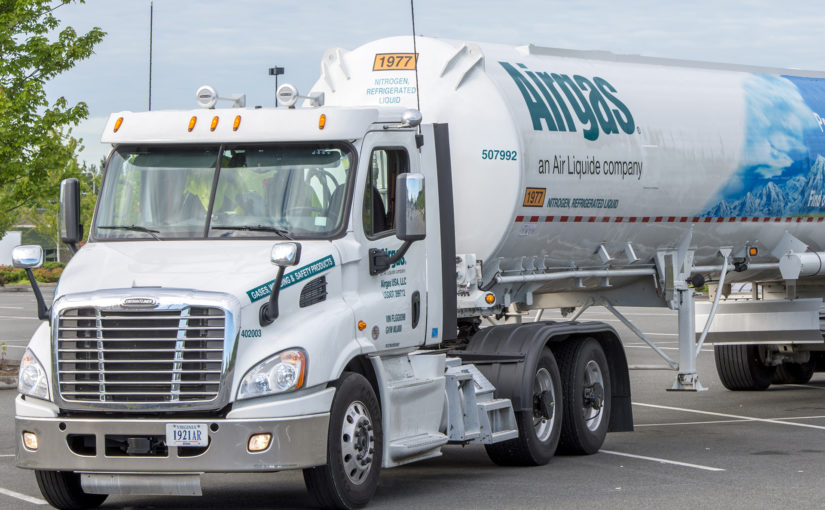Say you needed 500 gallons of, uh, gasoline. (Maybe you’re starting a go-cart business). Anyway, would you put all that gasoline in 500 one-gallon containers? Probably not. Most likely, you’d fill a tanker truck or several large barrels. If, on the other hand, you need just five gallons, a tanker wouldn’t make much sense. Choosing the proper mode of supply for your industrial gas should follow a similar logic.
Using the proper mode of supply can lead to increased efficiencies and decreased cost and aggravation. Whether you’re using cylinders, vertical gas liquid cylinders (VGLCs) and dewars, microbulk, bulk or on-site gas generation, the mode of supply can have a huge effect on the efficiency of your operation.
“For any construction site, there are key indicators ensuring the right supply mode is in place. They typically include the efficiency and overall cost relative to the number of welders on site, as well as what’s expected at peak for the specific project at hand. Having the right supply mode is paramount,” advises Jason Vetterick, Vice President of Construction at Airgas, an Air Liquide company.
Don’t base today’s supply on yesterday’s needs
Often, companies start with a supply mode that works for the current state of their business at that time. Unfortunately, however, they don’t make changes to their supply mode as the operation evolves and grows. So for some good advice, we turned to Vetterick and Bill Baker, Vice President of Service Markets and Safety for Airgas.
Signs you need a new supply mode
Selecting a supply mode is not always an easy task, and what might have been an efficient cost-effective option at the start of your business may not still be the case. According to Baker, some good indications that you might need a different mode of supply for your gases are:
- Questionable reliability via product run outs
- Frequent deliveries (more than 2-3 times per week)
- Multiple work interruptions caused by cylinder change-outs and/or excessive project spend on gases relative to other projects that are similar in size and scope
Determining the supply mode that’s right for you
According to Vetterick, “The single largest mistake you can make is not allotting enough time up front to plan with the supplier and/or allowing multiple gas suppliers onto a single site. Additionally, mistakes are made as a result of oversimplification or commoditization.”
Vetterick recommends putting your suppliers to work. Chemistry, physics, equipment type, processes, and logistics all play a critical role. Rely on their expertise to bring the latest and greatest industry best practices to your site with respect to on-the-job supply chain systems.
In addition to getting your suppliers involved, Baker suggests asking yourself these four questions when considering which mode of supply will be the best fit for your business.
- Where will my business be in two years? Five years?
- What effect will this have on the quality of products and impact of labor?
- What are the long-term costs? If there is an initial capital spend, will long-term savings justify it?
- Are there quality or efficiency impacts to supply that can be quantified?
Making a change
Does this have you thinking it’s time to make a change to your gas supply process? If so, be sure to factor in the costs associated with the transition process and the time needed for a transition. Depending on your type of business, an interim gas supply might be needed.
Other critical and more technical factors to keep in mind when making supply mode choices include distance from the source, pressures required, temperatures and flow rates. Different gases have different properties and the goal is to make them all sing the same tune.
Keeping status quo
If you’re thinking of changing mode in midstream of an existing project, calculations should be considered to ensure the benefit is there, contingent upon how much of the project remains on the timeline. In some cases, it may be more beneficial to wait until the project is complete before upgrading to a different mode of supply.
Use these tips as a guide when evaluating your current operation to determine if there’s an opportunity for increased efficiency and cost savings due to a change in supply mode. “It’s possible that switching from a standard cylinder supply mode situation to a more custom option within the bulk realm can save users up to 40% in gas spend alone,” Vetterick says.
“Focus should be on the project, not the gas delivery schedule. Your operation should be able to continue around the clock without any interruptions or delay in supply. Additional cost savings come from risk mitigation. For example, less truck and equipment movement on any site will generally reduce the amount of potential hazards.”
